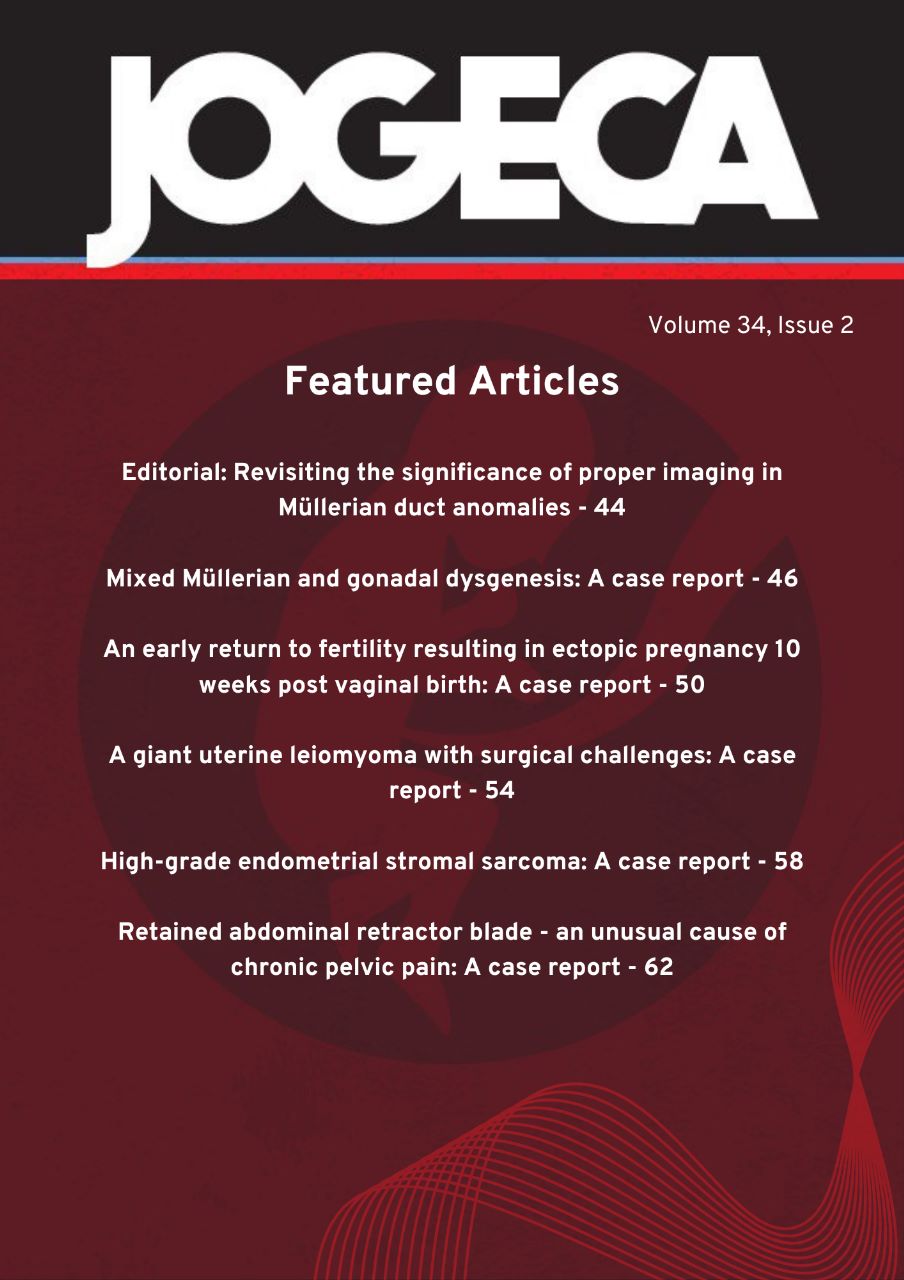PREVALENCE AND RISK FACTORS FOR PUERPERAL SEPSIS AT THE PUMWANI MATERNITY HOSPITAL.
DOI:
https://doi.org/10.59692/jogeca.v32i2.232Keywords:
Puerperal sepsis, morbidity, infection.Abstract
Introduction: Puerperal sepsis is the third most common cause of maternal mortality worldwide. It remains one of the leading preventable causes of maternal mortality. Given its significant burden in terms of morbidity, mortality and healthcare costs, studies on hospital specific incidences and patterns are important to help inform policy for its prevention and management. The aim of this study was to determine the prevalence and factors associated with puerperal sepsis at Pumwani Maternity Hospital, Kenya.
Methodology: We conducted a case-cohort study among post partum women admitted at Pumwani Maternity Hospital. Eligible women were invited to respond to a verbal researcher administered questionnaire assessing medical and obstetric history. Those recruited, were each called at day 7 and day 14 postpartum and asked a standard set of questions related to infection-related symptoms. In addition, all enrolled women who attended a postnatal follow up visit at 14 days postpartum were reviewed, using a history and clinical examination. The data was analysed to identify potential maternal risk factors associated with occurrence of puerperal sepsis.
Results: Seven hundred and ninety three postnatal mothers at Pumwani maternity hospital were recruited, of which 566 women responded at two weeks postpartum. Sixty nine women among the 566 met the criteria for puerperal sepsis. This corresponded to a prevalence of 12.2% at two weeks postpartum (95% CI 9.5 – 14.9%). Further analysis was done using 69 cases; each with 3 randomly selected controls. No deaths were reported. Risk factors included labour lasting >24hours, caesarean section, obstructed labour, and multiple vaginal examinations.
Conclusion: The prevalence of puerperal sepsis in this cohort at two weeks postpartum at Pumwani Maternity Hospital was at 12.2%(95% CI 9.5-14.9). Two or more vaginal examinations, prolonged and obstructed labour, and Caesarean section were found to be significantly associated with increased odds of puerperal sepsis. Appropriate measures like appropriate infection prevention protocols should be utilized in order to prevent avoidable complications of labour and delivery that can lead to puerperal sepsis.
Downloads
Published
How to Cite
Issue
Section
Categories
License
Copyright (c) 2020 The authors.

This work is licensed under a Creative Commons Attribution 4.0 International License.




